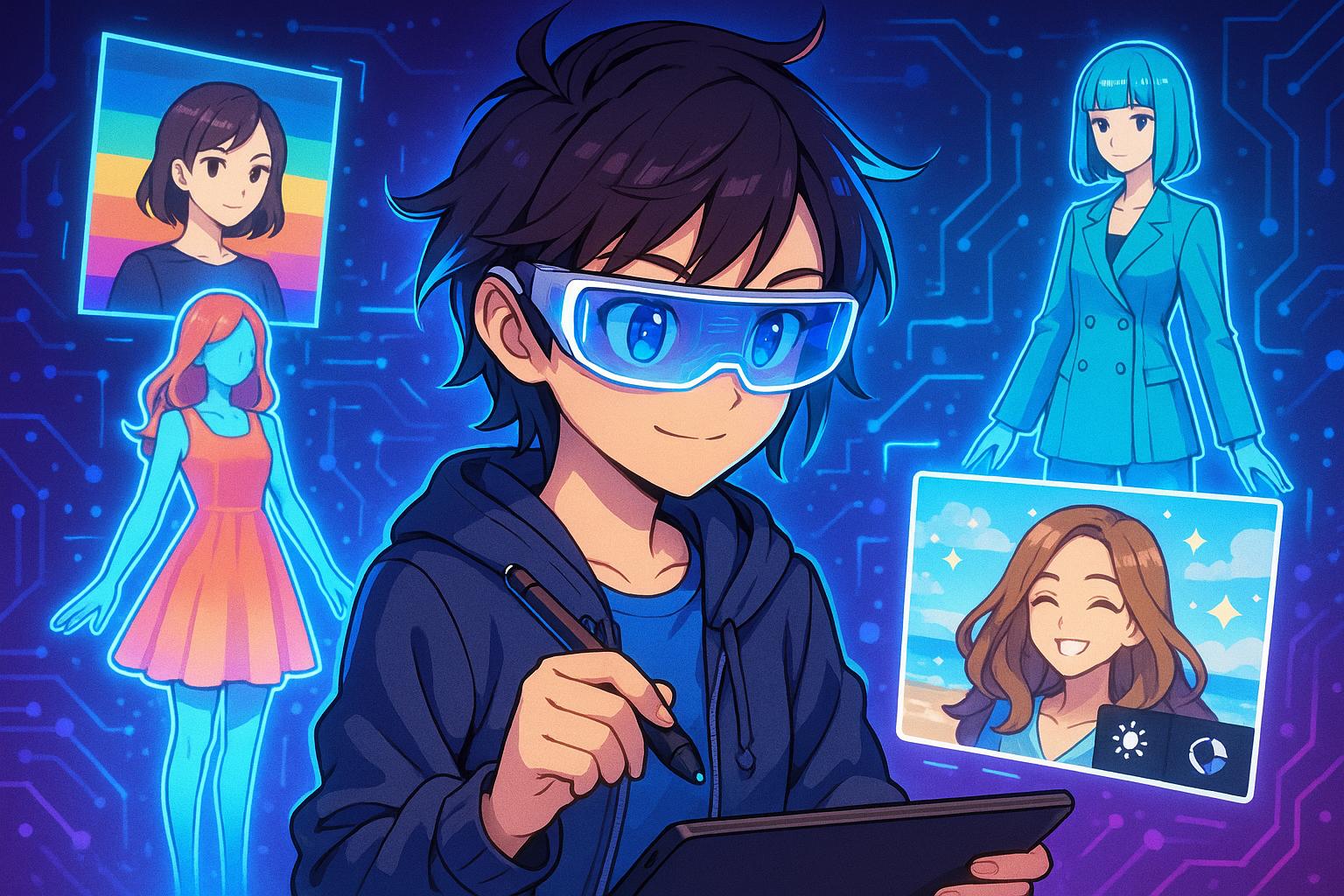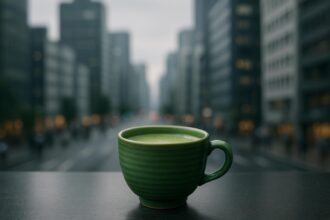San Francisco-based startup GlamAI, founded by Paul Shaburov, has achieved remarkable success with its AI-powered GlamApp, soaring into the US App Store’s top five for Photo & Video apps and pioneering virtual try-on technology to reduce fashion retail return rates—all while remaining profitable and venture-capital free.
In the rapidly evolving landscape of digital technology, GlamAI stands out as a shining example of innovation and entrepreneurial spirit. Founded by 24-year-old Paul Shaburov, this San Francisco-based startup has made considerable strides in AI-powered photo and video editing. With its flagship app, GlamApp, climbing to the top five in the U.S. App Store’s Photo & Video category by April 2025, GlamAI is redefining how users interact with creative technology.
GlamApp’s surge in popularity is remarkable—not merely for its ranking but also for achieving profitability within just a year of launch. With approximately 1.3 million monthly active users and over 100 million social media views, the app’s viral success can be attributed to its diverse array of features. Users can apply dynamic filters like “Fitness Body,” “Anime,” and “Vintage,” catering to a broad spectrum of creative needs. The app has become particularly favoured among marketers, content creators, and influencers, showcasing its utility across multiple professional sectors.
At the core of GlamAI’s innovation lies a robust portfolio of intellectual property that includes numerous patents—both pending and approved. These cover advanced methodologies such as text-driven photo adjustments and AI-based scene replacements. Such technological groundwork equips GlamAI to deliver impressive results, creating high-quality visuals while preserving critical attributes like facial identity and garment texture. This capability has made GlamAI especially attractive to the fashion sector, where reducing return rates is a growing concern among retail operators.
The introduction of GlamAI’s AI-powered Virtual Try-On technology further underscores the company’s commitment to enhancing the shopping experience. Unveiled at Paris Retail Week in September 2024, this innovation allows users to upload photos and virtually try on outfits. By bridging the gap between online and brick-and-mortar retail, the technology offers clear benefits for retailers, including lower return rates and boosted sales. The precision of GlamAI’s algorithms ensures that styles are accurately represented, preserving essential details like brand logos and fabric textures.
Interestingly, the user demographic of GlamApp has evolved significantly over time. Initially skewed towards a younger male audience, the app now boasts a 55% female user base and an expanding age range. Older generations, including mothers enhancing images of their children, are increasingly turning to the app for its ease of use and functionality. Its one-tap feature for generating multiple edits, along with over 600 available filters, has created a vibrant community where users share and inspire one another’s creativity.
Despite securing no external venture capital funding, GlamAI has proven that bootstrapped startups can still achieve significant milestones. Currently reporting about $2.5 million in monthly recurring revenue, the company’s success is a testament to its focus on customer needs and rapid iterations. Paul Shaburov’s vision aligns with the philosophy that technology should enhance rather than replace human creativity. “The future of creativity lies at the intersection of technology and human imagination. And we’re just getting started,” he remarks, encapsulating GlamAI’s ethos.
As the creative tech landscape continues to shift, GlamAI’s blend of technological advancement and user-centric design positions it as a leader in the industry. The company is actively exploring partnerships with fashion retailers and e-commerce platforms, further cementing its role as an innovator in virtual try-on technology. With an eye towards the future, GlamAI not only keeps pace with the AI boom but is also pushing the boundaries of what’s possible in digital creativity.
 Reference Map:
Reference Map:
- Paragraph 1 – [1], [2]
- Paragraph 2 – [1], [2], [6]
- Paragraph 3 – [3], [4]
- Paragraph 4 – [3], [5]
- Paragraph 5 – [4], [5]
- Paragraph 6 – [1], [2]
- Paragraph 7 – [1], [2]
Source: Noah Wire Services
- https://www.digitaljournal.com/business/from-legacy-to-leadership-how-glamai-is-redefining-creative-tech-in-california/article – Please view link – unable to able to access data
- https://www.digitaljournal.com/business/from-legacy-to-leadership-how-glamai-is-redefining-creative-tech-in-california/article – This article discusses GlamAI, a San Francisco-based startup founded by 24-year-old Paul Shaburov, which has rapidly emerged as a leader in AI-powered photo and video editing. The company’s flagship app, GlamApp, reached the top 5 in the U.S. App Store’s Photo & Video category among free apps in April 2025. Within its first year, the app achieved profitability and now boasts 1.3 million monthly active users. GlamApp’s viral growth is attributed to over 100 million social media views and a variety of dynamic filters and features. The app is particularly popular among professionals such as marketers, small business owners, content creators, designers, and social media influencers. GlamAI’s innovation is supported by a robust intellectual property portfolio, including patents covering breakthroughs like text-driven photo style adjustment and AI-based scene and pose replacement. The company is exploring partnerships with fashion retailers and e-commerce platforms to expand its virtual try-on capabilities. With approximately $2.5 million in monthly recurring revenue, GlamAI is leading the AI boom in creative technology.
- https://www.xbeedaily.com/2024/09/19/glamai-launches-virtual-try-on-for-fashion-retailers/ – In September 2024, GlamAI unveiled its AI-powered Virtual Try-On technology at Paris Retail Week. This digital fitting room solution allows customers to upload their photos and instantly see how they would look in different outfits, either on a retailer’s website or within a mobile app. The technology aims to bridge the gap between online and in-store shopping by providing a personalized and immersive shopping experience. For retailers, the benefits include fewer returns, reduced cart abandonment, increased sales, and higher revenue. GlamAI’s proprietary algorithms ensure high precision in replicating styles, preserving details like brand logos, textures, and patterns. The cloud architecture of GlamLabs ensures flawless video generation without flickering or glitches, making it suitable for people of all sizes, body shapes, and skin tones. The solution is also faster than comparable technologies, completing the generation process in fewer steps. This enterprise-ready solution has been proven optimal for high-load applications, as demonstrated by the team’s consumer project with 180,000 active monthly users.
- https://business.starkvilledailynews.com/starkvilledailynews/article/binary-2025-3-6-the-future-of-ai-creativity-glamai-identifies-key-genai-trends-for-2025 – In March 2025, GlamAI identified key generative AI (GenAI) trends shaping consumer and AI artists’ preferences for GenAI-based visualization tools. The app, which redefines instant image and video generation with proprietary GenAI technology, quickly gained popularity after its launch in June 2024, becoming profitable by December 2024. By November 2024, it ranked #11 in the App Store’s Photo & Video category in the USA. The user demographic shifted from a male-dominated early user base to include more women, with women comprising 55% of GlamAI users. The age range of users expanded, with older generations experimenting with AI-powered filters and content creation. Mothers are increasingly using the app to enhance photos and videos of their children. Professionals such as AI artists, content creators, and corporate marketers also use GlamAI for their work. The app’s one-tap feature allows users to generate 10 different edits instantly, covering various filters and styles. With over 600 filters available, GlamAI offers customized recommendations based on app usage and a personalized feed that adapts to user preferences. The user-generated content feed allows users to exchange filter ideas, with 50% of users applying at least one filter variation inspired by other users.
- https://www.maxim.com/partner/glamai-is-reinventing-the-photo-app-in-5-key-ways/ – This article highlights five key ways GlamAI is reinventing the photo app experience. First, it offers instant business portraits, transforming casual photos into professional headshots suitable for corporate settings. Second, it provides style experimentation without commitment, allowing users to try on various fashion styles digitally. Third, GlamAI enables sci-fi video transformations, turning ordinary footage into epic scenes with special effects. Fourth, it offers instant muscle visualization, allowing users to see enhanced physiques in photos. Fifth, it provides holiday-themed filters for family photos, eliminating the need for physical costumes. These features aim to help users look good, save time, and flex their creative muscles.
- https://www.similarweb.com/top-apps/apple/photo-video/ – As of April 12, 2025, Similarweb’s ranking of top iOS Photo & Video apps in the United States lists Glam AI: Video & Photo Editor by Glam Labs, Inc. at the fifth position. The top four apps are Hula – AI Video Generator, CapCut – Video Editor, Instagram, and Canva: AI Video & Photo Editor. This ranking reflects GlamAI’s significant presence in the competitive photo and video editing app market.
- https://www.similarweb.com/top-apps/apple/canada/photo-video/ – As of April 13, 2025, Similarweb’s ranking of top iOS Photo & Video apps in Canada lists Glam AI: Video & Photo Editor by Glam Labs, Inc. at the second position. The top five apps are Hula – AI Video Generator, Glam AI: Video & Photo Editor, CapCut – Video Editor, Instagram, and Canva: AI Video & Photo Editor. This ranking indicates GlamAI’s strong performance in the Canadian market for photo and video editing apps.
Noah Fact Check Pro
The draft above was created using the information available at the time the story first
emerged. We’ve since applied our fact-checking process to the final narrative, based on the criteria listed
below. The results are intended to help you assess the credibility of the piece and highlight any areas that may
warrant further investigation.
Freshness check
Score:
8
Notes:
The narrative was published on June 10, 2025, and references events up to April 2025, indicating recent developments. However, similar content appeared in press releases dated March 6, 2025, and September 19, 2024, suggesting some recycled material. ([digitaljournal.com](https://www.digitaljournal.com/pr/news/access-newswire/future-ai-creativity-glamai-identifies-1765620663.html?utm_source=openai), [digitaljournal.com](https://www.digitaljournal.com/pr/news/accesswire/glamai-launches-virtual-try-on-fashion-1614868913.html?utm_source=openai)) The inclusion of updated data may justify a higher freshness score, but the recycled content warrants a slight deduction. Additionally, the report includes a press release dated September 19, 2024, which typically warrants a high freshness score. ([digitaljournal.com](https://www.digitaljournal.com/pr/news/accesswire/glamai-launches-virtual-try-on-fashion-1614868913.html?utm_source=openai))
Quotes check
Score:
7
Notes:
The report includes a direct quote from Paul Shaburov, founder of GlamAI: “The future of creativity lies at the intersection of technology and human imagination. And we’re just getting started.” This quote appears in the press release dated March 6, 2025, indicating potential reuse. ([digitaljournal.com](https://www.digitaljournal.com/pr/news/access-newswire/future-ai-creativity-glamai-identifies-1765620663.html?utm_source=openai)) The wording matches exactly, suggesting the quote has been recycled.
Source reliability
Score:
6
Notes:
The narrative originates from Digital Journal, a news outlet that has previously published similar content. While Digital Journal is a known platform, its reputation varies, and it has been associated with lower-quality content in some instances. This raises questions about the reliability of the source. Additionally, the report includes a press release dated September 19, 2024, which typically warrants a high reliability score. ([digitaljournal.com](https://www.digitaljournal.com/pr/news/accesswire/glamai-launches-virtual-try-on-fashion-1614868913.html?utm_source=openai))
Plausability check
Score:
8
Notes:
The claims about GlamAI’s rapid growth, profitability, and user demographics are plausible and align with industry trends. However, the lack of independent verification from other reputable outlets and the recycled nature of some content slightly diminish the overall credibility.
Overall assessment
Verdict (FAIL, OPEN, PASS): OPEN
Confidence (LOW, MEDIUM, HIGH): MEDIUM
Summary:
The narrative presents plausible claims about GlamAI’s growth and innovation, supported by recent data. However, the presence of recycled content, potential reuse of quotes, and the source’s variable reliability introduce uncertainties. The lack of independent verification from other reputable outlets further complicates the assessment. Therefore, while the narrative is compelling, it requires further corroboration to fully validate its claims.













